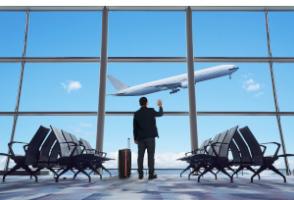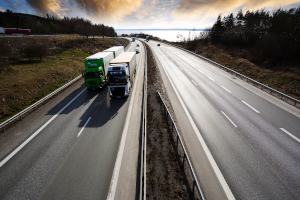Climate Change, Part 4: It’s All About the Straws, Isn’t It?
- < 3 Reasons Why Trust is Crucial Between Manufacturers and Architects
- > How LEED v4.1 Could Affect Building Product Manufacturers
I have been writing off and on about Bill Gates’ October 2018 post regarding climate change. Initially, I was interested in what he had to say because I was surprised to find out how much of an impact manufacturing has on climate change. Previously, I didn’t draw a strong connection between sustainable building and climate change, but the more I researched what Gates wrote, the more I saw how much intersectionality there is within the world of sustainability. In fact, I was surprised to learn that what I thought I knew about climate change wasn’t necessarily the whole truth.
Previous blog posts in this series focused on the big three—manufacturing, agriculture, and electricity. Depending on what report you’re reading, these trade position and percentage of ownership in the climate change race, but they usually always hold the 1st, 2nd, and 3rd spots. What surprised me is that they beat out what I thought would be the front runner—transportation—which claimed spot 4 on Gates’ list. According to him, transportation only contributes 14% to greenhouse gas emissions and climate change; however, according to an article on the Environmental Protection Agency’s website, that number can hit as high as 27%. I thought with all the focus on CO2 emissions from cars and alternative transportation modes such as electric cars, bikes, mass transit, and carpooling, that transportation would take the top spot. Further, I thought the issue was basically cars, and I was wrong.
How Transportation Contributes to Climate Change
Automobiles definitely have an impact, but it turns out it they contribute less than half of transportation-related emissions, and this number is expected to shrink in the future. The big contributors come from:
Airplanes—Aircraft use a huge amount of fuel and burn it high in the sky where the air is thinner than near land and the chemical makeup of the air is at higher risk of detrimental effects. and it’s a hard issue to fix because there isn’t another way to move large numbers of people long distances in a short amount of time. It is expected that air travel and air cargo will have doubled between 2004 and 2020, due to both travel and movement of goods. The alternatives to using aircraft seem too futuristic to be taken seriously, including using hydrogen for plane fuel, high-speed magnetic-levitation trains (but they can’t go over the ocean, so there’s that limitation), and airships.
Cargo Ships—The global economy runs on ships. Items made in Asia travel by boat to their intended markets; cars made in America get shipped overseas; and ships are an integral part of international trade. Shipping is such a large contributor to the transportation category of climate change contributors, that if the international shipping industry were its own country, it would be the sixth largest climate polluter. Although we’re focusing on greenhouse gases, that’s not the only way cargo ships contribute to pollution in general. Apart from atmospheric pollution, issues can include ballast water, wildlife and marine life impacts, oil spills, noise pollution, sewage and greywater pollution, bilge water, and solid waste such as glass, plastic, carboard, etc. that finds its way into the ocean.
Long-Haul Trucks—Most of us have been on the freeway behind a semi-truck and seen the black exhaust belch out from it. Even with huge changes and government crackdowns, it’s impossible to completely delete the affect of long-haul trucking on greenhouse emissions. Roughly 70% of domestic goods are shopped via truck, and there’s not really a viable alternative to that (just like with the issue of international shipping or air transportation!) Mass transit busses, luxury travel busses, and class A RV’s can be thrown in this category as well, although the busses offset their damage by the shared ride benefit they offer.
What Can We Do to Fix This?
There’s a lot of elements within the category of transportation and greenhouse gas emissions, most which are outside the average person’s scope of effectiveness. Most of us won’t have an influence on government regulations or international/domestic trade, but we can try to understand the problem and seek to remove ourselves as part of it as much as possible. What are some ways this can be done?

1. Change our personal transportation choices: Drive less; use public transportation; bike or walk; carpool; make choices for shopping and entertainment that are closer to home; buy a hybrid or an electric car; use ride shares services like Car2Go, CarGuru, or ZipCar; or use the trip-share options on Uber and Lyft so more rides can be given in one swoop.
2. Work from home: While not feasible for a lot of us, working from home even one day a week eliminates that drive time, and has a lot of other benefits.
3. Buy less stuff: If there’s less stuff to ship, then there’s less shipping being done. Our personal buying habits matter. If we want our items NOW, then commerce will find a way to make that happen. The number of cars, trucks, and stops it takes to get our packages delivered in two days or less is astronomical, adding to the pollution and green house gasses emitted. And I’m preaching to the choir here, having just used my Prime membership on Amazon to get a 2019 day-planner, deworming medicine for my cat, and a water bottle my son wanted for a friend. None of that was time sensitive, and the world wouldn’t have stopped if it took a week versus two days for it to arrive. If you must use these expedient shipping services, at least choose the option for shipping in as few boxes as possible. In general, try to buy as little as possible and see what happens.
4. Change the way we use air transportation: How many of us fly somewhere instead of drive because we need to save time? Or because we’re so close to the next level of frequent flyer miles? What if we did more staycations? Even further, regarding air travel and trade, what if we stopped buying things from other countries and only shopped locally? It wouldn’t stop the need for air travel but consider that a flight from San Francisco to Boston would generate about 2600 kg of greenhouse gases per passenger round trip, while driving would account for only 930 kg per VEHICLE. When we think about the environmental cost of flying, it might change the way we think about it.
5. Drive cleaner: If you must drive, keep your vehicle tuned up and properly inflate the tires; combine errands; avoid idling; reduce the weight in your car and/or remove the roof rack when not using; and accelerate slowly and smoothly as it burns less fuel. And again, there’s always the option of trading in for a more environmentally conscious car. You don’t have to go electric, either. Your 1990 Honda may finally be on its final leg, and trading it in for a newer Honda that burns fuel cleaner is an option (I know, I know—then what do we do with the 1990 Honda heading to the landfill—but about 65% of a car is recyclable!)
6. Change your business practices: I realize that most of this post seems to have nothing to do with specification or building, but all of these can be done on a personal or a professional level. Build relationships with and work toward specification by local companies; be aware of the transportation effects of your product; consider shipping options when fulfilling orders or when purchasing ingredients from suppliers; encourage your sales team to be aware of their route and time of day when making visits, in order to combine trips and eliminate as much traveling and idling as possible; and conduct as much business via email and phone calls as possible, using face to face meetings only when necessary (I know this flies in the face of some traditional sales tactics, but it’s just a suggestion to consider in the right circumstances).
Many of these seem whimsical, seeming like the only thing I left out was using a horse and buggy! The final suggestion is just as far-fetched but needs to be considered. We live in a world dominated by the rat race, and this propels us to go, go, go. But our going IS impacting the environment. It’s simple and seems impossible, but we need to slow down. We need to find more mindful ways of living, shopping, working, eating, and vacationing. In the past, more of life was spent in the community in which you lived, and city planning was done to accommodate that. There is wisdom in that existence. While it’s silly to think we can revert back to that same level of simplicity, it isn’t ridiculous to attempt incorporating elements of it in our lives in order to contribute positive change to our world. Transportation may not be the largest contributor to greenhouse gas emissions and climate change, at least according to Bill Gates, but it is one of the easier ones the average person can participate in changing.
What changes can you make, personally or professionally, to reduce greenhouse gasses related to transportation? Has your company developed an innovated way to help this area? We’d love to hear it!
For more information or to discuss the topic of this blog, please contact Brad Blank





